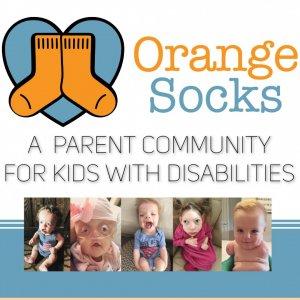Inspiring life despite a diagnosis

Brittney and Derik
Brittney and Derik share what SHINE syndrome is and how it has made an impact in their life. Their daughter has been a joy in their life despite some of the difficulties that come when having a child with SHINE syndrome.
SHINE syndrome: Brittney and Derik’s Story
What is SHINE syndrome?
SHINE syndrome stands for sleep disturbances, hypotonia, intellectual disabilities, neurological delays, and epilepsy. There are only 150 known cases world wide, making the disability extremely rare.
Brittney, a parent of a child diagnosed with SHINE, said, “We think that there are a lot more that are under-diagnosed with either autism or epilepsy. A lot of children with SHINE do have either one or both.”
Early signs of SHINE
The first thing Brittney and Derik noticed was that their daughter was diagnosed with torticollis. “Her head was basically stuck in one direction; she would constantly look that way…that cleared up with physical therapy and then she was still developmentally delayed at that point,” Brittney recalled.
She continued saying that she wasn’t interested in toys, and she wasn’t rolling over. This was atypical for infants. When compared to her two neurotypical boys, Brittney and Derik knew something was wrong.
SHINE syndrome is a spectrum disorder
After being diagnosed when their daughter was two years old, Brittney joined a SHINE Facebook group for parents. She learned that each child’s disorder was unique because of the wide range of abilities and assistance needed.
“Some of them don’t walk, some of them don’t talk and then some of them did and then they regressed..A lot of kids will have a seizure for instance and lose progress in their development.” Brittney said.
Some children are total care, which means every aspect of the child’s life requires assistance, and others are independent. There is one known case of a father with SHINE syndrome who has a child with SHINE as well.
Getting SHINE diagnosed
After doing a genetic test on their daughter, Derik and Brittney were glad they found answers. Derik said, “We definitely wanted to know what was going on with her..so, it was kind of comforting to know what the diagnosis was and what was going to be happening and just be able to help her treat that was a good thing too. And knowing what we were going to be able to have an answer going forward to be able to address what was going on.”
Brittney shared, “We have this answer of a reason why she is having all these difficulties and it brings us all hope that hopefully one day be able to support each other in the SHINE community and hopefully be able to help more families be able to know.”
The joys of SHINE syndrome
“I think just the light that she brings, she is really joyful, she just makes you happy to see her smile. She gives people hugs, she just runs up to strangers and gives people hugs and says hi to them. She really is just joyful to be around, so I really enjoy her presence. Just being around her lights up everything in the world and the people around her.” Derik shared.
Advice for parents of children with SHINE syndrome
Brittney’s advice to parents is to do your research and be prepared to educate your doctors. Most doctors are unfamiliar with SHINE syndrome because of how rare it is.
Brittney said, “ A lot of the doctors that I see are like, ‘what is it?’ or I tell them now, look it up ahead of time, this is what my daughter has so that they are pre alerted so they know and they can research a little bit, because there are some articles and some research that has been done. It’s minimal but there is a little bit.
She also advised to be involved in the SHINE community. They have a great support system through the community. They have meetings once a month where they can meet and pick each other’s brains about issues or concerns they are having. This has become a great source of information for Brittney and Derik.
Brittney shared, “I’ve learned more I think about SHINE during those informal meetings from other parents’ questions and there are some more experienced parents with the SHINE syndrome that will answer and give us some advice on how to navigate different things.”






 Visit Podcast Website
Visit Podcast Website RSS Podcast Feed
RSS Podcast Feed Subscribe
Subscribe
 Add to MyCast
Add to MyCast